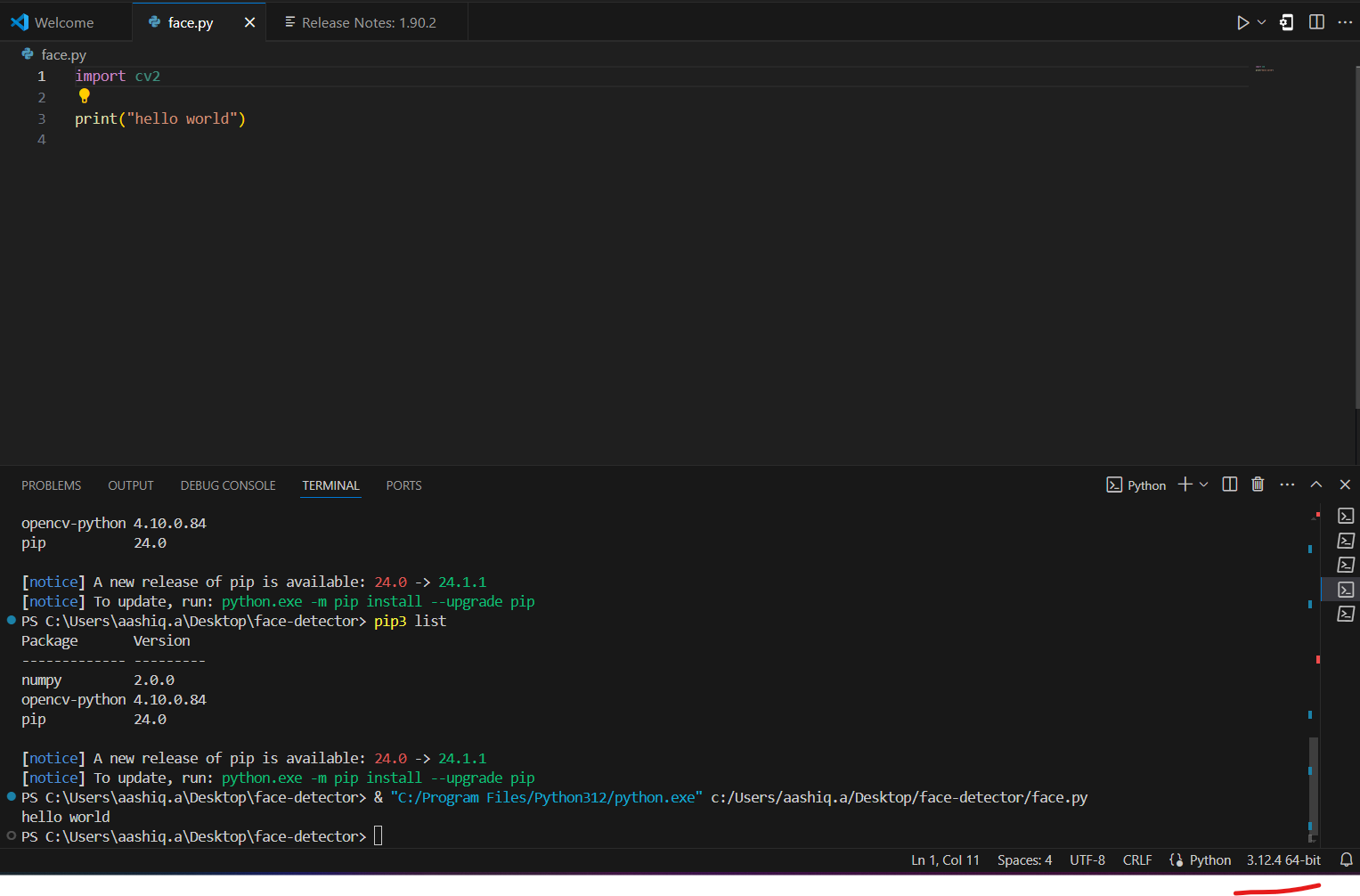I have been working on this error for a long time now. I have Python 3.6 and Python 2.7. I have tried to install opencv 2 and 3 in Python 2.7 and Python 3.6 respectively. I know the python interpreter I am using and I can interchange between them when I want.
When I run Python interpreter and write import cv2 it does import it. When I run the code from command prompt it says ModuleNotFoundError: No module named 'cv2'.
The module is installed. The cv2.pyd file is in C:\Python27\Lib\site-packages I have attached a screen shot which shows the modules in Python27
I have used pip install opencv-python. I have downloaded the module from different sites and manually copy pasted it in the correct folder. Nothing works and I am seriously short of ideas now.
EDIT: I am on windows 10 with python 3.6 installed through anaconda and python 2.7 installed directly. Both have their variables set in the path




pip(in scripts) – EyI have downloaded the module from different sites and manually copy pasted it in the correct folder.What?? Why?? That's not how it is supposed to be. – Dominopythonthat you can manually importcv2from, if you have a one-linetest.pythat readsimport cv2, doespython test.pyproduce the import error? – Drew